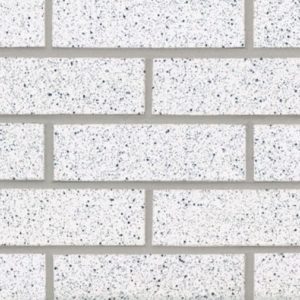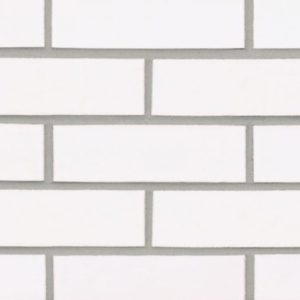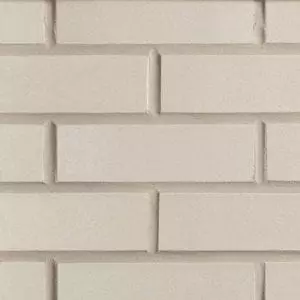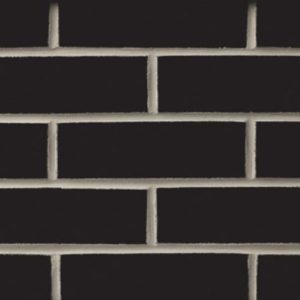What Is Glazed Brick?
Glazed brick starts out life just like any other standard brick used in masonry. But while the latter typically gets fired once, glazed brick gets a second firing. And that’s where the magic happens. The second firing fuses a ceramic coating to the brick, giving it a glazed finish that can be either glossy or matte. But the benefits aren’t just aesthetic. That outer coating is also near-invincible, making it a prized material among builders everywhere. It’s available in various sizes and in full and thin brick options.
Read More
Why Use Glazed Brick?
Beauty
It is a classic building material that never goes out of style.
Damage-Resistant and Fade-Proof
It’s protected by a layer of outer glazing that can withstand liquid, gases, extreme weather, everyday wear and tear, and more. And graffiti? Doesn’t stand a chance.
Durability
It’s made from natural clay or super-strong concrete, with all of the virtues of full-bed brick. It creates lasting and solid structures that are well insulated against external elements and noise.
Versatility
It works both indoors and outdoors. It provides structural support for load-bearing walls and is also suitable for aesthetic upgrades and flourishes.
Simple Maintenance
It requires very little upkeep and retains its beauty year after year.
Glazed Brick Types
Brands
Discover a variety of high-quality glazed brick options from trusted names in premium brick, such as Glen-Gery and King Klinker. These brands are known for their commitment to excellence and innovation, offering top-notch materials for any building project.
Colours, Styles, and Textures
Glazed brick is available in a wide range of styles to suit every design aesthetic. Whether you prefer classic neutrals for a timeless look or eye-catching colours to make a bold statement, there is a glazed brick option to match your vision. The diverse textures and finishes also allow for unique design possibilities, ensuring that each project has a distinct and personalized touch.
- Classic Neutrals
Create a timeless look with trend-proof neutrals that bring elegance and sophistication to any building project. Neutral glazed brick offer a versatile foundation that complements various architectural styles and design preferences. These shades are perfect for creating serene, balanced spaces that never go out of style. Whether you’re looking to build a modern minimalist home, a traditional facade, or a sleek commercial building, neutral tones provide the perfect backdrop. These classic colours work well with other materials, allowing for endless design possibilities while ensuring the structure remains visually appealing for years to come.
- Eye-Catching Colours
Make a bold impression with vibrant colours that stand out and bring energy to any space. Bright, eye-catching glazed brick are ideal for those looking to make a statement with their building projects. These vivid hues can transform a standard structure into a memorable landmark, attracting attention and admiration. Whether used as an accent wall, a feature piece, or the main colour theme, these bold shades add personality and creativity to both residential and commercial buildings. Vibrant colours can evoke emotions, create focal points, and set the tone for the entire environment, making them an excellent choice for schools, community centers, and other public spaces that benefit from a lively, inviting atmosphere.
Explore our design inspiration page for more ideas.
Glazed Brick Application
Glazed brick is used mainly in wall construction and is particularly suited to structural walls, partition walls, and veneers.
In general, working with glazed brick is just like working with any other type of full-bed brick or thin brick. The same rules and principles of good construction apply.
For full-bed glazed brick, ensuring proper drainage is a must. This includes constructing a cavity wall of at least 2 inches (or 4 centimetres) and installing the necessary flashing and weep holes to allow moisture to escape.
Even though glazed brick is a tough material, it can still get nicked and dinged during construction. Avoid metal tools, acids, and abrasive cleaners, which can scratch or otherwise damage the glazing. Instead, wipe down the surface with clean water and detergent. You can also use a stiff fibre brush on extra tough stains and to clear away excess mortar bits.
Why Choose I-XL Building Products
I-XL is Canada’s go-to brick supplier, offering an extensive selection of products to meet the needs of everyone from professional designers and architects to builders, masonry contractors, and DIYers. With an extensive product range and unbeatable customer service, I-XL has established itself as one of the most reliable suppliers in Canada for all your building needs.
Ready to start your next project? Get in touch to explore your options and request a free quote.
Read Less







